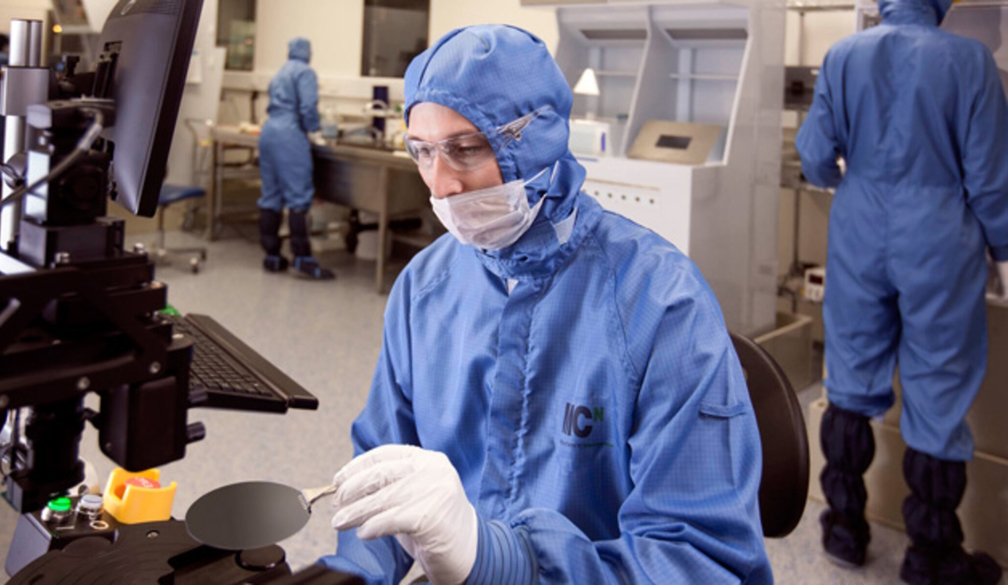Canadian-Australian Alliance Could Hold Key to Better Diagnosis and Treatment of Epilepsy

Epilepsy is one of the most common neurological conditions, affecting approximately 1% of the world population. For 1/3 of patients, the drugs are not effective. It has been medically proven that surgery is the best option for many of these patients. However, a limited number of epilepsy surgeries are conducted each year due partly to the lack of high-quality data required for successful surgery and the risks involved in the procedures.
Canadian biotech company, Neuraura has been working with the Melbourne Centre for Nanofabrication and neurosurgeons at University of California, Irvine and scientists to develop a microsensor, no bigger than 1/5 of the diameter of a human hair, that has been shown in animal studies to detect 100% of seizures and to isolate more precisely where in the brain these seizures are originating. Neuraura was formed as a spin-out from the University of Calgary as part of a collaboration between the Hotchkiss Brain Institute (Cumming School of Medicine), a pioneering institution in the field of brain-chip interface, and the Schulich School of Engineering.
According to Sumeet Vadera, a neurosurgeon at UC Irvine who is also an advisor to Neuraura, drug resistant patients with epilepsy require the placement of electrodes deep into the brain to determine the origin of the epileptic seizures before surgery can proceed. “However currently we have the electrode made by one company and another provides the data and there is still a lot of noise,” he said.
“The Neuraura technology provides both the sensors and a better quality signal so we can locate where the seizures are originating from.”
The company expects to have FDA approval by the beginning of next year, according to co-founder, Dr Pierre Wijdenes, whose PhD research formed the basis of the technology. “We also think the Neuraura technology represents a major opportunity to improve upon the efficacy of current FDA-approved devices for neuromodulation in epilepsy, to treat the ~50% of patients for whom current devices are ineffective,” he said.
“Current electrodes on the market capture a high-level of baseline noise and collect data sparsely. This makes it challenging to detect early signs of seizure activity and limits evaluation of spatial propagation of seizures.”
In pre-clinical trials of the technology the Neuraura electrodes proved to be much more sensitive to neural signals than legacy devices with up to 265% increased signal-to-noise ratio, according to Dr Wijdenes. “Our electrodes detect low-stage epileptic activity that is masked by noise on recordings from existing devices, and report seizure activity more quickly,” he said.
“Importantly, the Neuraura technology has more electrodes allowing it to capture signals with larger amplitude than legacy sensors – allowing clinicians to see neural activity more clearly and evaluate how signals propagate through tissue.”
Part of Neuraura’s success has been in working with researchers at the Melbourne Centre for Nanofabrication, who have been refining the technology through out the pre-clinical process. “MCN has been crucial in fast tracking the development of our technology so that we expect to be offering a significantly more refined and targeted device to market by 2024,” Dr Wijdenes said.
According to Scientific Director of MCN, Professor Nicolas Voelcker, “Neuraura engaged the MCN to fabricate implantable neuro-electrodes for seizure and metabolic conditions detection/intervention,” he said.
“MCN played a critical role both in design consultation and fabrication, resulting in the production of these sensors. It’s been a fantastic example of an international industry collaboration with tangible technologies being the result. The interaction continues to take place with variants of the initial concept in a different application space.”
Neuraura is also looking to redefine the device for the treatment of other metabolic conditions, including a ground-breaking device which sits on the abdomen providing low grade electronic stimulation for the treatment of symptoms related to dysmenorrhea and Polycystic Ovarian Syndrome (PCOS). “Neuraura is particularly invested in developing technologies for these issues, recognising that there is little research into women’s health despite PCOS being the primary cause of female infertility,” Dr Wijdenes said.







